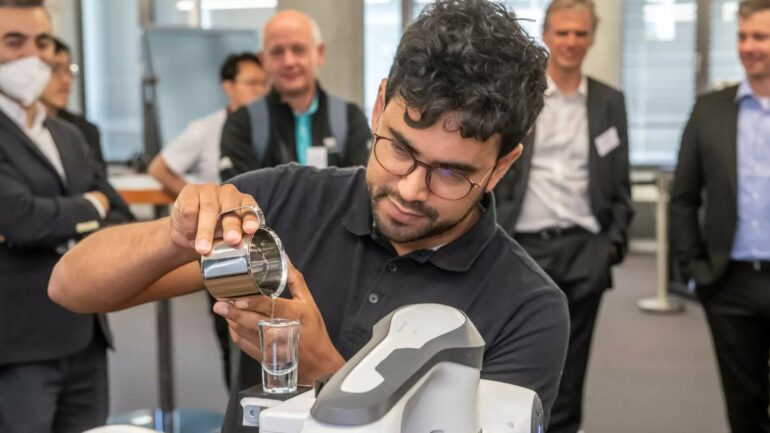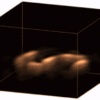Researchers at the Munich Institute of Robotics and Machine intelligence (MIRMI) at the Technical University of Munich (TUM) have developed a model that enables a robot to serve tea and coffee faster and more safely than humans—with no sloshing. The mathematics behind the pendulum used in the concept is more than 300 years old.
Can a robot be a better waiter than a human being? To answer this question, Dr. Luis Figueredo, senior scientist in the team of Prof. Sami Haddadin, set up a robotic arm from the specialized robot maker Franka Emika and hooked up a computer. The robot’s hand grips a glass filled to the brim with water, raises it and rocks it back and forth without spilling a drop. “And it does it faster and more safely than a person,” says the scientist from the Munich Institute of Robotics and Machine Intelligence (MIRMI) of TUM.
Copying the motion of the Moroccan tea tray
How does it work? The team simply fed the robot with algebraic formulas dating back several centuries. They based their mathematics on a Moroccan tea tray that applies the principle of a spherical pendulum.
With doctoral candidate Riddhiman Laha and masters student Rafael I. Cabral Muchacho, Figueredo embedded the dynamics of a spherical pendulum into the robot’s control software. That means that the robot’s movements are limited by the basic principles of geometry. With his team, he also integrated the correct angles, speeds and accelerations into the model. “When you understand how a pendulum moves and know how it works, it is suddenly quite simple,” says Figueredo.
The mathematics of a pendulum: A simple solution to a complex problem
The science of slosh-free movement is a complex field. “Most approaches have focused mainly on limiting acceleration to keep the sloshing of liquids under control. Or they have worked with fluid dynamics to calculate how these substances behave in order to predict the trajectories,” explains Figueredo: “That takes at least a few minutes, if not hours, and the result is still uncertain.”
Applications in health care and the transport of hazardous liquids
As a practical application, the scientists initially envision innovative robotic support for elderly people and those requiring nursing care. “But industries involved in the transport of materials posing biological and chemical hazards would probably be interested in a solution like this, too,” says Figueredo.
Safety remains a critical point: a robot should ideally be capable of recognizing dangerous situations. “For that we need better perception,” says Figueredo.
Sensors would then enable the machine to not only recognize people, but also predict their movements. That is the only way to completely rule out collisions with the robot. So far, the robot is working with tactile sensors as a safety mechanism. In the current slosh-free mode, the robot arm instantly retracts when it senses a collision, but also keeps the liquid safe.
More information:
Rafael I. Cabral Muchacho et al, A Solution to Slosh-free Robot Trajectory Optimization, arXiv (2022). DOI: 10.48550/arxiv.2210.12614
Provided by
Technical University Munich
Citation:
Using Moroccan tea tray mathematics to turn robots into skilled waiters (2023, January 16)



